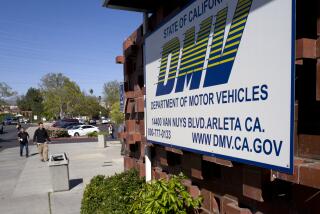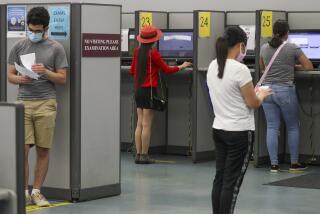Simple tests may be able to determine who can drive after having a stroke
- Share via
After suffering a stroke, driving a car may be challenging due to vision problems, weakness and loss of coordination. But a study finds that three simple tests done in a doctor’s office could be effective at deciding who’s going to be safe behind the wheel.
The study was a meta-analysis of 30 studies involving 1,728 men and women, average age 61. Among those, 54% passed an on-road evaluation.
After analyzing the studies, researchers found that three simple tests done in a doctor’s office may be used to determine how well someone does behind the wheel following a stroke. Those three tests are a road-sign recognition test, which examines traffic knowledge and visual comprehension; a compass task that tests visual-perceptual and visual-spatial skills and mental speed; and the Trail Making Test B, which assesses visual-motor tracking and visual scanning aptitude.
Each test correctly identified 80% to 85% of unsafe drivers, and the authors wrote that a combination of the three tests would offer a better model to determine how stroke victims perform on the road.
Three-fourths of the studies analyzed showed that those who were cleared to drive after having a stroke had no greater risk of accidents than other drivers. Motor skills, however, were not a good predictor of an ability to drive.
“These are simple tests that can be done in the doctor’s office, which is important because on-road tests are time-consuming and expensive,” said study co-author Hannes Devos, of Catholic University of Leuven in Belgium, in a news release. “These tests are readily available and can be administered within 15 minutes.”
The study was released this week the in the journal Neurology.






